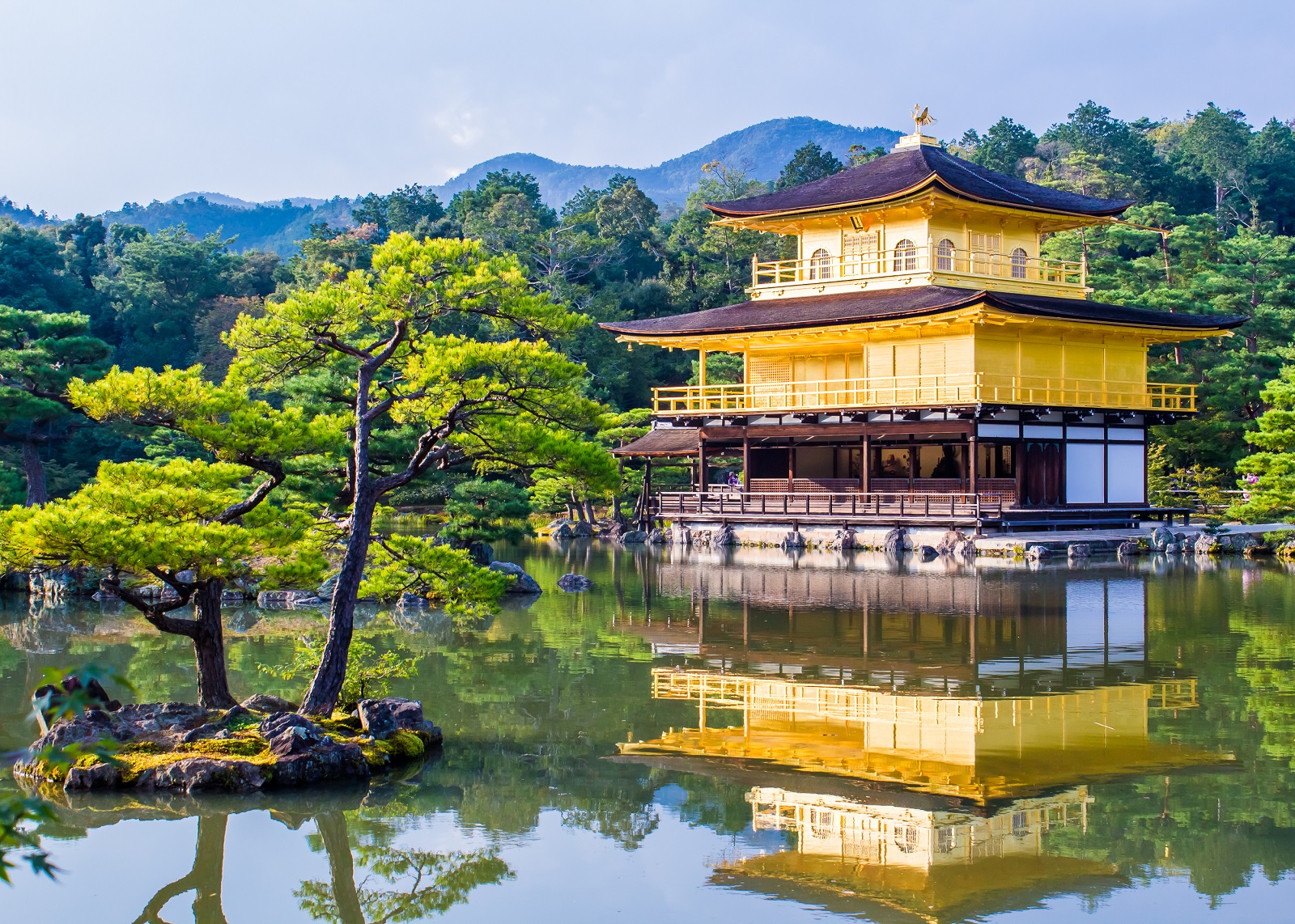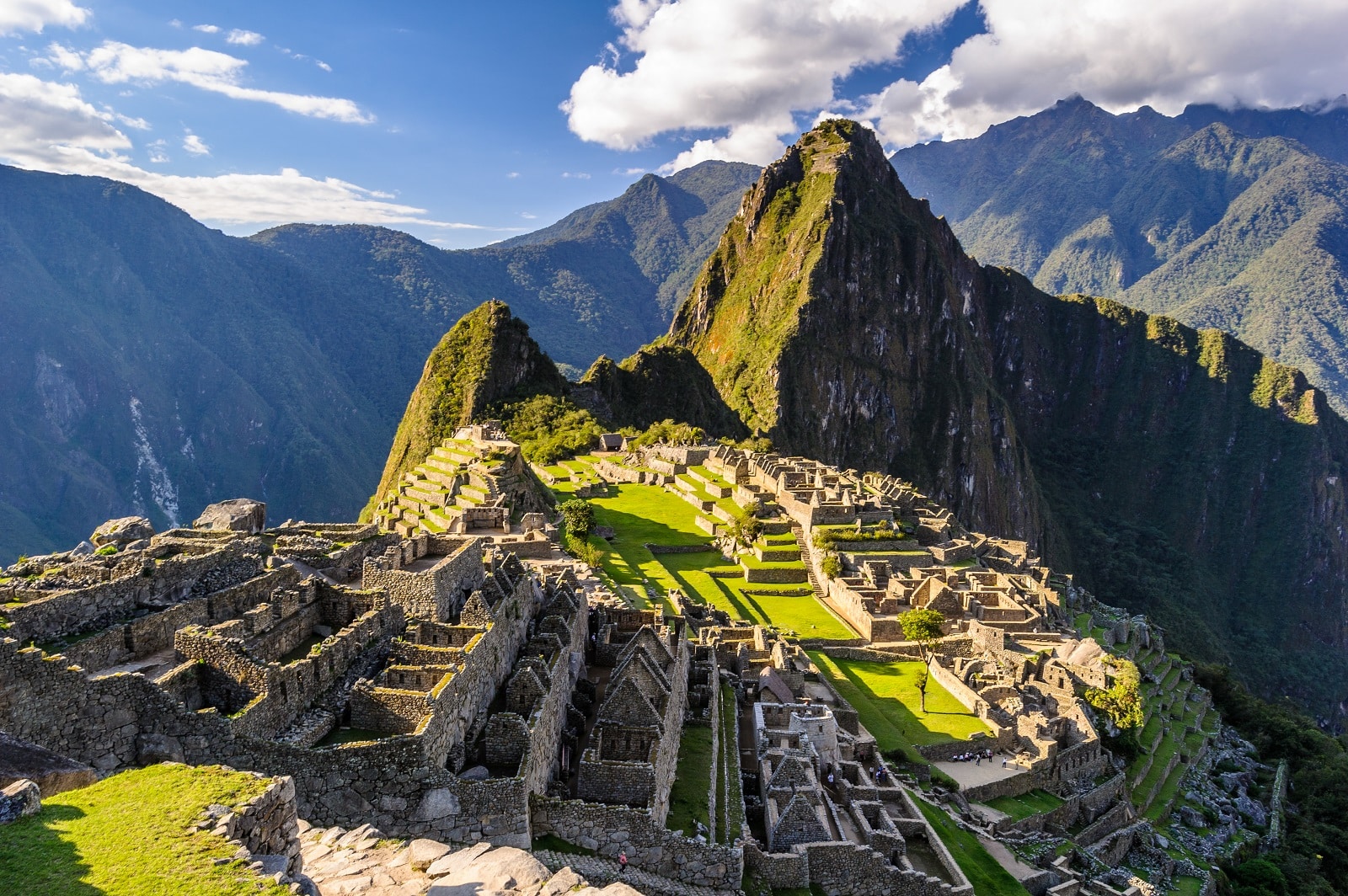Exploring the world’s top cultural destinations offers a unique opportunity to delve into the diverse tapestry of human history and heritage. This guide, “World’s Top Cultural Destinations: Exploring Rich Cultural Heritage Across Continents,” is designed to be a practical and informative resource for travelers seeking to deepen their understanding of the world’s rich cultural landscapes.
From the historic streets of Rome to the vibrant markets of Marrakech, each destination presents a chance to experience the unique traditions, art, and lifestyles that have shaped societies across the globe. This guide will provide you with essential information about 15 of the most culturally significant locations worldwide, including insider tips, the best travel times, and directions on how to reach them. It’s a straightforward, no-nonsense companion for anyone looking to enrich their travels with cultural learning and exploration.
1. Kyoto, Japan – Explore the Ancient City

Image Credit: Shutterstock / marcociannarel
In Kyoto, you’re immediately immersed in a city deeply rooted in history. As you explore, you’ll encounter landmarks like the Kinkaku-ji, or Golden Pavilion, a testament to Japan’s ancient architecture. The streets of the Gion district offer a glimpse into traditional Japanese culture, with its old wooden buildings and teahouses. Here, history isn’t just found in museums; it’s a living, breathing part of the city that you can experience firsthand.
Your visit to Kyoto also allows you to engage with authentic Japanese customs. Try attending a traditional tea ceremony to appreciate the subtle art and discipline behind this practice. Wander through the tranquil Zen gardens, and you’ll understand why Kyoto is not just a city to see but to experience. It’s a place where the past coexists with the present, offering a unique window into the cultural heart of Japan.
Insider Tip: Don’t miss the traditional tea ceremonies.
Best Time to Travel: Late March to April for cherry blossoms or November for autumn colors.
Getting There: Fly to Kansai International Airport and take a train or bus to Kyoto.
Website: Visit Kyoto
2. Rome, Italy – A Walk Through History

Image Credit: Shutterstock / Igor Link
Every step in Rome is a walk through many layers of history. The city, often called the “Eternal City,” offers an unparalleled glimpse into the past, with its well-preserved ruins and centuries-old buildings. Iconic structures like the Colosseum and the Roman Forum behold the grandeur of the Roman Empire, inviting you to imagine the spectacles and daily life of ancient times. As you meander through the cobblestone streets, the rich tapestry of Rome’s history is evident at every turn, from monumental fountains to awe-inspiring basilicas.
Exploring Rome is also an opportunity to connect with the city’s enduring cultural legacy. Throwing a coin into the Trevi Fountain, as per tradition, is a simple yet memorable way to engage with local folklore. Visiting landmarks like the Pantheon or the Spanish Steps allows you to witness the architectural genius that has influenced numerous cityscapes around the world. Rome’s history is a tangible, vibrant presence that surrounds you, offering a unique and enriching experience with every visit.
Insider Tip: Purchase a Roma Pass for free public transport and access to various sites.
Best Time to Travel: April to June and September to October.
Getting There: Fly into Leonardo da Vinci–Fiumicino Airport and use the train or bus services.
Website: Rome Tourism
3. Cairo, Egypt – Land of Pharaohs

Image Credit: Shutterstock / AlexAnton
In Cairo, Egypt, you’re in the heart of ancient history. The city serves as a gateway to some of the world’s most magnificent historical treasures. Visiting the Pyramids of Giza and the Sphinx, you’ll find yourself face to face with the remnants of ancient civilizations, structures that have stood the test of time and continue to fascinate. The Egyptian Museum adds another layer to your understanding, showcasing artifacts that bring the stories of pharaohs and ancient Egyptian life into sharper focus.
Exploring Cairo also means experiencing its bustling present-day culture. Wander through the Khan El Khalili bazaar to feel the pulse of modern Egyptian life amidst the backdrop of historic architecture. Here, you can haggle over souvenirs or simply soak in the atmosphere of this vibrant city. Cairo is a place where ancient history and contemporary life intersect, offering a unique experience that blends the past with the present.
Insider Tip: Explore the Khan El Khalili bazaar for unique souvenirs.
Best Time to Travel: October to April to avoid the scorching heat.
Getting There: Cairo International Airport is well-connected globally.
Website: Experience Egypt
4. Paris, France – City of Light and Love

Image Credit: Shutterstock / Guenter Albers
Step into Paris, a city renowned for its monumental history and enduring charm. As you wander its streets, iconic landmarks like the Eiffel Tower and the Notre Dame Cathedral tell the story of a city that has been a center of art and culture for centuries. The Louvre and Musée d’Orsay are treasure troves of artistic masterpieces, inviting you to explore French and global art history. Paris, often called the “City of Light,” shines not just through its illuminated streets and monuments at night but through its cultural and intellectual vibrancy.
Your experience in Paris also offers a deeper connection with the city’s romantic and bohemian spirit. Strolling along the Seine, especially at sunset, you can feel the romance that permeates the city’s air. The quaint cafes and cobblestone streets of neighborhoods like Montmartre offer a glimpse into the city’s artistic heritage, where painters and writers have long found inspiration. In Paris, every corner, every cafe, and every street has a story, making it a city to be experienced and felt.
Insider Tip: Visit lesser-known museums like Musée Rodin for a unique experience.
Best Time to Travel: April to June and October to early November.
Getting There: Fly to Charles de Gaulle Airport and use the extensive metro system.
Website: Paris Info
5. Beijing, China – Ancient Meets Modern

Image Credit: Shutterstock / V_E
You’ll experience a fascinating blend of ancient history and modern progress in Beijing. The city is home to remarkable historical sites like the Forbidden City and the Temple of Heaven, which offer insight into China’s imperial past. These centuries-old structures starkly contrast with contemporary architectural feats like the Bird’s Nest Stadium, showcasing Beijing’s dynamic evolution. As you navigate the city, you’ll witness how it has maintained its cultural heritage while embracing modernity, a balancing act few cities manage so seamlessly.
Exploring Beijing allows you to witness the everyday life of its residents amidst this historical and modern backdrop. Walking through the hutongs, the city’s traditional alleyways, you’ll get a sense of the local lifestyle, often unchanged for generations. Meanwhile, the city’s bustling markets and numerous eateries provide a taste of both traditional and contemporary Chinese cuisine. Beijing is a city where the past is always present, and the future is eagerly anticipated, offering a unique urban experience deeply rooted in its rich history.
Insider Tip: Try Peking Duck, a local delicacy.
Best Time to Travel: April to October.
Getting There: Beijing Capital International Airport has numerous connections.
Website: Travel Beijing
6. Marrakech, Morocco – Magical Medina

Image Credit: Shutterstock / ZCphotography
The Medina is a labyrinth of historic streets and vibrant markets in the heart of the city. As you wander through this area, you’ll encounter a sensory overload of sights, sounds, and smells. The bustling Jemaa el-Fnaa square, with its array of street performers, food stalls, and local artisans, offers a glimpse into the lively Moroccan culture. The surrounding souks, filled with various goods from spices to textiles, allow you to experience the traditional Moroccan market atmosphere, vibrant and bustling with activity.
Beyond the marketplaces, Marrakech’s Medina is also home to historic sites that reflect the city’s rich heritage. With its exotic plants and striking blue accents, the serene Majorelle Garden provides a peaceful contrast to the busy streets. Exploring the historic palaces and mosques, like the Bahia Palace and the Koutoubia Mosque, offers insight into the architectural and cultural legacy of the region. In Marrakech, the old and the new coexist harmoniously, providing a unique and authentic experience of Moroccan life.
Insider Tip: Bargain in the souks for the best deals.
Best Time to Travel: March to May and September to November.
Getting There: Menara Airport is the main gateway.
Website: Visit Marrakech
7. Mexico City, Mexico – A Blend of Cultures

Image Credit: Shutterstock / Luis Boucault
Mexico City is a metropolis bustling with energy. You’ll find a unique blend of cultures that shapes its character. The city’s rich history is evident in its diverse architecture, from the ancient ruins of Teotihuacan to the colonial buildings in the historic center. Landmarks like the Frida Kahlo Museum and the Palacio de Bellas Artes offer insights into Mexico’s artistic heritage. As you explore, you’ll notice how indigenous, Spanish, and modern influences merge, creating a dynamic cultural landscape that’s uniquely Mexican.
This fusion is also palpable in Mexico City’s everyday life. The city’s vibrant neighborhoods, each with its own personality, showcase a unique cultural diversity. In areas like the Zócalo, the main square, you can immerse yourself in the hustle and bustle of local life. Mexico City’s cuisine is another highlight, a flavorful mix of indigenous and Spanish influences. From street food vendors serving tacos and tamales to upscale restaurants offering contemporary Mexican cuisine, the city caters to all tastes, embodying the essence of its cultural blend.
Insider Tip: Try street food for an authentic taste of Mexico.
Best Time to Travel: March to May.
Getting There: Mexico City International Airport is well connected.
Website: Visit Mexico City
8. Athens, Greece – Cradle of Civilization

Image Credit: Shutterstock / Viacheslav Lopatin
You are at the epicenter of ancient history and the birthplace of Western civilization in Athens. The Acropolis, a symbol of ancient Greek architectural ingenuity and cultural prowess, dominates the city’s landscape. Wandering through the ruins of the Parthenon, you’ll feel the weight of history and the significance of the ancient world’s contributions to modern society. The city’s numerous other historical sites, like the Agora and the Temple of Olympian Zeus, further connect you to the distant past, bringing to life the stories of philosophers, playwrights, and politicians who laid the foundations of contemporary thought and governance.
Athens is a living, breathing city where history meets the hustle of modern life. The Plaka district, with its narrow streets lined with quaint cafes and shops, offers a charming blend of the old and the new. Here, amidst the vibrant daily life of Athenians, you can enjoy traditional Greek cuisine or absorb the lively atmosphere. Athens presents a unique blend of history and contemporary culture, offering insights into ancient times and the evolving narrative of a city that has been at the crossroads of civilizations for millennia.
Insider Tip: Visit museums on national holidays for free entry.
Best Time to Travel: April to June and September to October.
Getting There: Athens International Airport is the main hub.
Website: This is Athens
9. Jaipur, India – The Pink City

Image Credit: Shutterstock / AlexAnton
Jaipur is also known as the Pink City; a distinctive blend of royal history and vibrant culture greets you. The city’s trademark terracotta pink buildings, a color symbolizing hospitality, create a unique urban landscape. Key historical sites like the Hawa Mahal, with its intricate latticed windows and the majestic Amber Fort perched on a hilltop, reflect the grandeur of Rajput architecture. Along with the Jantar Mantar observatory, these landmarks illustrate Jaipur’s historical significance and its role in India’s royal past.
Beyond its architectural wonders, Jaipur is a hub of cultural activity and artisan craftsmanship. The bustling markets, such as Johari Bazaar and Bapu Bazaar, are alive with vibrant fabrics, exquisite jewelry, and traditional handicrafts, showcasing the skilled work of local artisans. The city is also a feast for the senses, with streets filled with the aroma of authentic Rajasthani cuisine, offering a taste of the region’s rich culinary heritage. In Jaipur, the old and the new coalesce seamlessly, presenting a city that’s firmly rooted in its traditions while embracing the rhythm of modern life.
Insider Tip: Take a guided tour for a deeper understanding of the history.
Best Time to Travel: November to February.
Getting There: Jaipur International Airport serves the city.
Website: Jaipur Tourism
10. Istanbul, Turkey – Where East Meets West

Image Credit: Shutterstock / Efired
Istanbul is uniquely positioned at the crossroads of Europe and Asia, both geographically and culturally. This strategic location has endowed Istanbul with a rich tapestry of history, where influences from the East and the West are intricately woven. Iconic structures like the Hagia Sophia and the Blue Mosque epitomize this blend, showcasing architectural elements from the Byzantine and Ottoman empires. The city’s skyline, a mosaic of domes and minarets, bridges, continents, and cultures, visually represents its diverse heritage.
Navigating through Istanbul, you’ll experience this cultural fusion firsthand. The Grand Bazaar, one of the world’s largest and oldest covered markets, is a microcosm of the city’s spirit, with its myriad of shops selling everything from spices to textiles. A cruise along the Bosphorus gives you a literal and metaphorical perspective of the city straddling two continents. In Istanbul, the convergence of different cultures isn’t just a historical fact; it’s a living, evolving reality that shapes the city’s identity, cuisine, art, and the daily life of its residents.
Insider Tip: Enjoy a Bosphorus cruise for stunning city views.
Best Time to Travel: March to May and September to November.
Getting There: Istanbul Airport is the main international gateway.
Website: Go Istanbul
11. Cusco, Peru – Gateway to Machu Picchu

Image Credit: Shutterstock / 3bnarbo
Peru is in the ancient heart of the Inca Empire. This city serves as the gateway to the world-renowned Machu Picchu. The streets of Cusco are a living museum where Inca architecture and Spanish colonial buildings coexist, telling the story of a city with a complex and layered history. Sites like Sacsayhuamán and the Sacred Valley near Cusco offer glimpses into the Inca civilization’s architectural connection to the natural world. This city is a significant historical treasure in its own right.
The cultural richness of Cusco extends beyond its historical sites. Wandering through its cobbled streets, you’ll encounter vibrant markets filled with colorful textiles and local crafts, showcasing the artistic skills passed down through generations. The local cuisine, with its unique flavors and ingredients native to the Andes, offers another layer of cultural experience. In Cusco, the past and present converge, providing a tangible connection to the traditions and heritage of the Inca civilization and a deeper understanding of the region’s cultural identity.
Insider Tip: Acclimatize in Cusco before heading to higher altitudes.
Best Time to Travel: June to August.
Getting There: Alejandro Velasco Astete International Airport serves Cusco.
Website: Cusco Peru
12. St. Petersburg, Russia – Imperial Splendor

Image Credit: Shutterstock / Sergei Afanasev
St. Petersburg’s legacy of its imperial past is unmistakably etched into the cityscape. The sprawling Hermitage Museum, once a czarist palace, now houses a vast collection of art and historical artifacts, symbolizing the city’s long-standing patronage of the arts. Equally impressive is the Winter Palace, a beacon of baroque architecture and luxury, which speaks to the opulence of Russia’s royal history. As you walk along the Neva River, the architectural grandeur of St. Petersburg, from the Peter and Paul Fortress to the ornate Church of the Savior on Spilled Blood, unfolds before you, each structure a chapter in the city’s illustrious past.
The city’s broad avenues and picturesque canals often likened to those in Venice, offer a daily backdrop to the vibrant cultural life here. Ballet and opera performances at the historic Mariinsky Theatre continue the city’s rich tradition in the performing arts. Meanwhile, the annual “White Nights” festival, celebrating the season of near-endless daylight, brings the city to life with music, dance, and a spirit of celebration. In St. Petersburg, the magnificence of its imperial heritage seamlessly melds with a lively contemporary cultural scene, making it a city that both reveres its history and celebrates its present.
Insider Tip: Attend a ballet at the Mariinsky Theatre.
Best Time to Travel: June to August for summer; December to February for winter.
Getting There: Pulkovo Airport is the main airport.
Website: Visit St. Petersburg
13. Buenos Aires, Argentina – The Paris of South America

Image Credit: Shutterstock / CLWphoto
Argentina, often dubbed the “Paris of South America,” is a city that exudes a European flair while maintaining a distinctly Latin American soul. The architecture of Buenos Aires, with its grand boulevards and elegant Belle Époque buildings, echoes the style of Paris, reflecting the city’s cosmopolitan history. Neighborhoods like Palermo and Recoleta are lined with chic cafes, sophisticated boutiques, and lush parks, contributing to the city’s stylish and vibrant atmosphere. The city’s rich cultural tapestry is evident in its diverse population, a blend of European and indigenous influences reflected in everything from the local language to culinary traditions.
However, Buenos Aires is not just a reflection of European culture; it’s a city with a unique identity, deeply rooted in Argentine traditions. The city is the birthplace of tango, a dance that encapsulates the passion and intensity of Buenos Aires life. You can experience this firsthand in the city’s traditional milongas, where dancers of all ages gather to participate in this expressive art form. The cuisine of Buenos Aires, especially its world-renowned steaks and Malbec wine, offers a taste of the country’s gastronomic prowess. In this city, European elegance and Latin American energy combine to create a sophisticated and warmly welcoming environment.
Insider Tip: Try Argentine steak and Malbec wine.
Best Time to Travel: March to May and September to November.
Getting There: Ministro Pistarini International Airport is the main airport.
Website: Buenos Aires Tourism
14. Havana, Cuba – Step Back in Time

Image Credit: Shutterstock / Anna Jedynak
You’ll feel like you a traveling back in time when you step into Havana. The streets are lined with beautifully decayed colonial buildings and dotted with classic American cars from the 1950s, creating a unique and photogenic tableau. Old Havana, a UNESCO World Heritage Site, is particularly notable for its well-preserved architecture and vibrant street life. As you wander through this part of the city, the rich history of Cuba is palpable in every plaza and along the cobblestone streets, where music, art, and the spirit of the Cuban people come alive.
The historical ambiance is more than just visual; it’s a living part of Havana’s identity. The city’s cultural scene is dynamic and deeply rooted in its past. The Malecón, Havana’s famous seaside boulevard, is a gathering place for locals and offers a glimpse into everyday Cuban life against the backdrop of the city’s historic buildings and the ocean. Salsa music fills the air, inviting visitors to experience the island’s famous rhythms and dances. In Havana, the past is not a distant memory; it’s an essential part of the city’s present-day charm and allure.
Insider Tip: Visit a local cigar factory.
Best Time to Travel: November to April.
Getting There: José Martí International Airport is the main gateway.
Website: La Habana
15. Cape Town, South Africa – A Blend of Natural and Cultural Wonders

Image Credit: Shutterstock / Richard Cavalleri
The interplay between natural beauty and cultural diversity creates an extraordinary experience in Cape Town. The city is dramatically set against the backdrop of Table Mountain, with stunning beaches and the expansive Atlantic Ocean framing its borders. This unique geography offers a plethora of outdoor activities, from hiking up Lion’s Head for panoramic views to exploring the biodiversity of the Cape Floral Kingdom. The natural wonders of Cape Town are not just a backdrop but an integral part of the city’s identity, deeply influencing the lifestyle and leisure activities of its residents.
Cape Town’s cultural landscape is just as diverse as its natural one. The city boasts a rich history that reflects a blend of Indigenous, Dutch, British, and Malay influences, visible in its architecture, cuisine, and traditions. District Six Museum and Robben Island, where Nelson Mandela was imprisoned, provide poignant insights into South Africa’s apartheid past. Meanwhile, the vibrant neighborhoods of Bo-Kaap and Woodstock showcase the city’s artistic and creative side, with colorful buildings, street art, and trendy cafes. In Cape Town, the beauty of its environment and the depth of its cultural heritage coalesce, offering a multifaceted experience to visitors.
Insider Tip: Take the cable car to Table Mountain for panoramic views.
Best Time to Travel: September to April.
Getting There: Cape Town International Airport.
Website: Cape Town Travel
The Bottom Line

Image Credit: Shutterstock / eldar nurkovic
This guide serves as a starting point for travelers seeking to immerse themselves in the rich cultural tapestries of these destinations. Each section provides a snapshot of what to expect, making it easier to plan a culturally enriching journey around the globe.
The post Discover 2024’s Top 15 Cultural Hotspots Around the Globe! first appeared on Mechanic Insider.
Featured Image Credit: Shutterstock / frantic00.
For transparency, this content was partly developed with AI assistance and carefully curated by an experienced editor to be informative and ensure accuracy.



